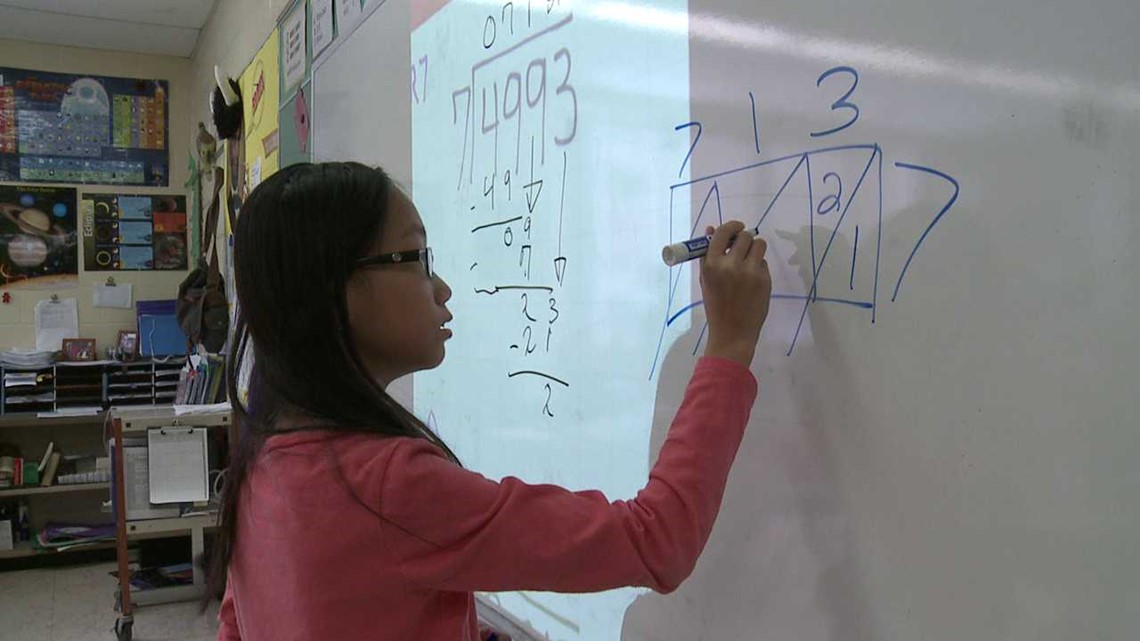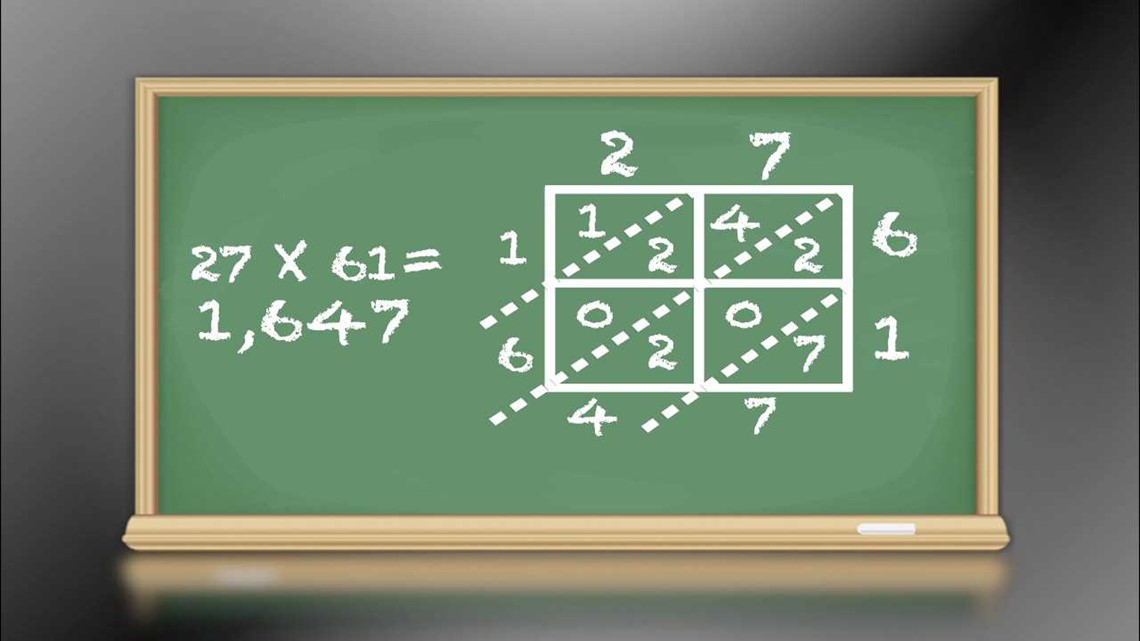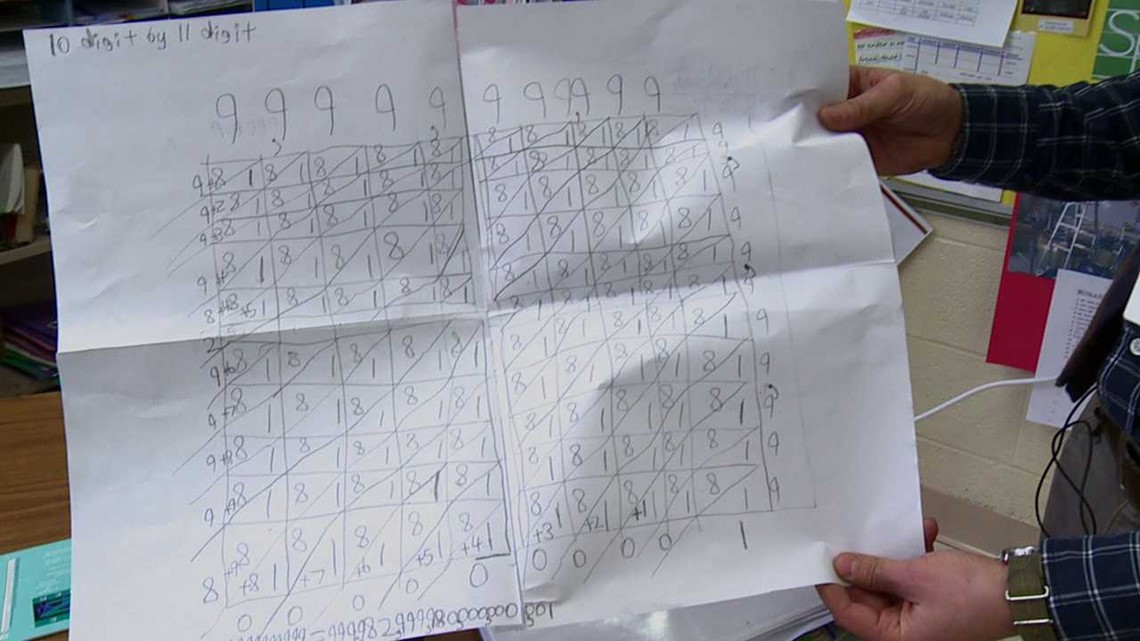Students in some local elementary schools are learning a completely different way of doing multiplication. It’s a technique that many parents can’t understand. It’s called lattice multiplication.
The method has been around for hundreds of years. Some schools in our area recently began teaching it, and it's getting mixed reviews.
This is what a lattice multiplication setup looks like for the problem 14 x 56:


Apollo Elementary in Aledo, Illinois is just one of several schools that recently introduced lattice multiplication.
“It’s just a completely different way of doing math, and that scares some people,” said Daryn Rush, a fourth grade teacher at Apollo Elementary.
Rush has been teaching at Apollo for nearly two years. His students describe him as young, energetic and entertaining. It's easy to see his passion for educating children.
When Rush noticed several of his students struggling with multiplication, he searched for answers. One day, a student showed him the lattice multiplication method.


"I thought, 'Well, if one student can do it that way then maybe others can, too,'" Rush said.
So he began incorporating lattice multiplication into his lessons. He was skeptical at first, but he stayed committed and soon the method “spread like a wildfire,” Rush said.
“I went from nobody doing their homework, to everybody getting it in and getting 100’s on it,” Rush said.
But not everyone supports the new technique.
Just 50 miles away in Geneseo, Illinois, Lisa Lease withdrew her two boys because they were struggling with a similar style of multiplication that she referred to as "common core math."
Rather than just multiplying the numbers, Conner and Carter and other students had to draw boxes to break down the problem.
“It’s time-consuming and frustrating,” Lease said. “We spent an hour and a half one night on my third grader's homework because I didn’t know how to do it.”
Lease said every night was a struggle to help her third- and fifth-grade boys. Many nights, they would work on math from the time they got home until bedtime.
Lease says she wasn’t the only parent whose kids were suffering.


It eventually drove her to take action, and that action was home schooling.
Today, Conner and Carter are learning multiplication the way their mother learned it. No boxes or drawing, just multiplying.
“Life has been so much easier since I pulled them out,” Lease said.
Lease added that both of her sons are now excelling in math. She credits the traditional method they are learning.
“I get that the newer methods help kids, but it’s not a one-size-fits-all, and kids learn differently,” Lease said.
Rush says he knows lattice is just one way to help students with multiplication, but their future teachers might not accept the method. That's one reason he teaches both lattice and traditional multiplication to his students.
“I let them have the choice on how they can solve it,” Rush continued, “To me, as long as they can show me work and do the problem, I’m fine.”
“I tell them it’s something they can do now just so they can understand it, but they are going to have to do it a different way as well,” Rush said.
So, why not just stay with traditional multiplication?


“I think that the kids who can learn multiplication two different ways are probably much better off in the future,” said Rush.
In fact Mr. Rush has seen dramatic improvement in his students' multiplication skills. He says he now sees his students doing math just for fun.
“If I can get kids like that doing math outside of school, that’s fine with me,” Rush smiled.
It may not be a one size fits all, but the kids at Apollo Elementary can do it, even if some of their parents cannot.
Learn how to solve multiplication problems using lattice math from the video below.

